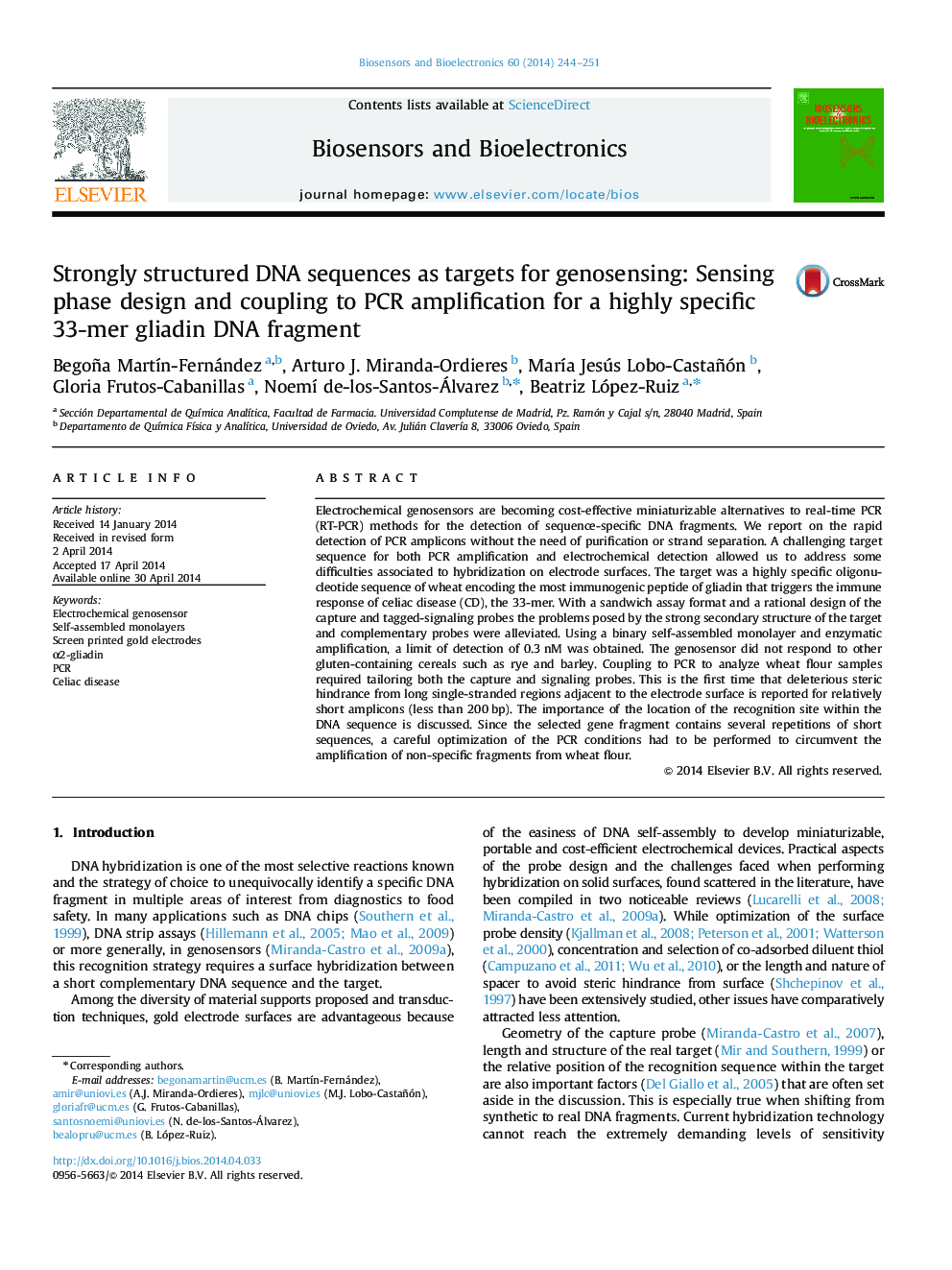| کد مقاله | کد نشریه | سال انتشار | مقاله انگلیسی | نسخه تمام متن |
|---|---|---|---|---|
| 866440 | 1470971 | 2014 | 8 صفحه PDF | دانلود رایگان |

• Repetitive self-complementary DNA sequences difficult genosensing design.
• In sandwich format secondary structure is better in capture than in signaling probe.
• Overhangs or fringe regions in the surface duplex are deleterious for performance.
• Sensitive detection of DNA coding an immunodominat peptide in celiac disease.
• PCR was coupled after optimization to avoid spurious amplicon from repetitive genes.
Electrochemical genosensors are becoming cost-effective miniaturizable alternatives to real-time PCR (RT-PCR) methods for the detection of sequence-specific DNA fragments. We report on the rapid detection of PCR amplicons without the need of purification or strand separation. A challenging target sequence for both PCR amplification and electrochemical detection allowed us to address some difficulties associated to hybridization on electrode surfaces. The target was a highly specific oligonucleotide sequence of wheat encoding the most immunogenic peptide of gliadin that triggers the immune response of celiac disease (CD), the 33-mer. With a sandwich assay format and a rational design of the capture and tagged-signaling probes the problems posed by the strong secondary structure of the target and complementary probes were alleviated. Using a binary self-assembled monolayer and enzymatic amplification, a limit of detection of 0.3 nM was obtained. The genosensor did not respond to other gluten-containing cereals such as rye and barley. Coupling to PCR to analyze wheat flour samples required tailoring both the capture and signaling probes. This is the first time that deleterious steric hindrance from long single-stranded regions adjacent to the electrode surface is reported for relatively short amplicons (less than 200 bp). The importance of the location of the recognition site within the DNA sequence is discussed. Since the selected gene fragment contains several repetitions of short sequences, a careful optimization of the PCR conditions had to be performed to circumvent the amplification of non-specific fragments from wheat flour.
Journal: Biosensors and Bioelectronics - Volume 60, 15 October 2014, Pages 244–251